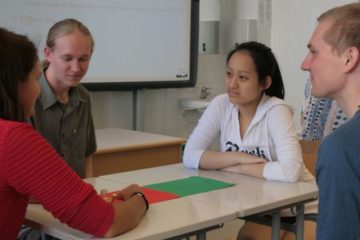Author: Meri Ahonen, LessonApp co-founder and math, chemistry and physics teacher in lower secondary school, Nokia, Finland.
This lesson is an introduction about ‘percents’. Students get acquainted with percents during primary school but of course we will recall the basics at 8th grade before starting to solve more difficult problems.
At first I will explain a couple of principles of my distance teaching this Spring:
- I used mainly Google Meet and GSuite (Classroom, Forms, Docs, Sheets….) for distance teaching. I shared documents, instructions, videos, exercises, etc. in Google classroom group. Students were familiar with it before distance teaching.
- My groups had weekly goals. Students got the amount of stuff to do depending on how many lessons they had each week. They could choose when they did it and reported in their own learning diary (when, what, was it easy/ok/hard, any questions…).
- Mathematic groups had compulsory online meetings at the start of every lesson. We continued using students’ normal schedule which was used before distance teaching.
- In online meetings I presented theory and/or showed examples. After the shared start, student get to choose: either continue by themselves with the exercises from Math book or stay online to practice together with more examples if they wished. No matter what choice they made, every one needed to write a brief report to his/her learning diary.
- I stayed online during the whole lesson so students could ask for help. I shared materials and some videos to classroom to support learning by themselves.
- At the start of distance teaching I tried to sharpen the idea that students are doing this for themselves, not for me.
This time I only used one teaching method, the other block is about students choosing how to practice.

1. Search information (30 min)
Students will look for percents written on everyday things: They try to find three different items from, for example, food, drink, cleanser, and electronics, and then check the item’s contents, news, internet, or sales packages. They take pictures of their findings and return them to Google classroom exercise.
(15 min for searching and taking pictures and 15 min for returning them to Google classroom.)

I collected students’ findings in a powerpoint and presented them later on, when we did a small project about percents in advertising.
2. Choose a working method. (30 min)
Students can come to online meet to listen theories and do exercises from Math book together or start learning by themselves and report to learning diary. They can come back to online meet whenever they need help.

At the end of each week I will check the learning diaries. I will comment how it is going on, answer questions, and give example answers; if there are no markings, I try to connect with the student and investigate what is going on.





0 Comments